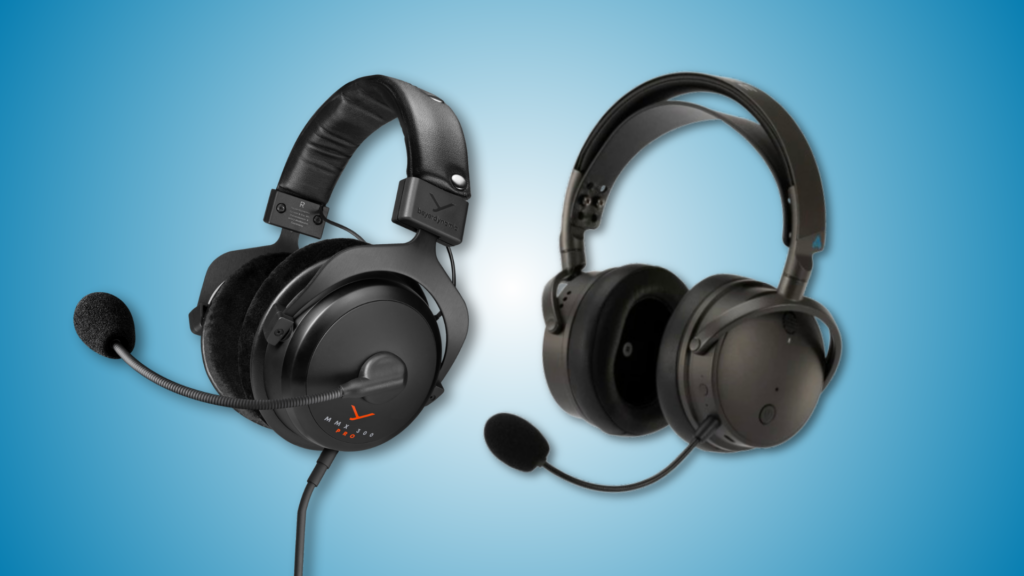In the gaming world, there are two things that make a video game great: visuals and sounds. It’s no wonder people who are avid gamers take the time to invest in the top quality PCs or gaming consoles to play their favorite games: they want to have the best experience possible. The audio in a video game, be it the score or essential sound effects, is something that people don’t want compromised during gameplay. That being said, there are a ton of headphone companies that are competing to give gamers a top quality audio experience to go with their gameplay. Today, we take a look at the beyerdynamic MMX 300 Pro, the newest of their gaming headsets, and Audeze Maxwell, a wireless gaming headset from a well known brand. Which one is better for your next round? Let’s look at the details and find out.
What Comes In The Box
| Audeze Maxwell — $299 | Beyerdynamic MMX 300 Pro — $329 |
| Audeze Maxwell Gaming Headset
USB-C Wireless Dongle USB-C Cable 3.5mm TRRS Analog Cable USB-C to USB-A Adapter Quickstart guide and warranty card Detachable boom mic |
Gaming Headset MMX 300 Pro
1 x Connection cable with 2 x 3-pole mini jack plugs (3.5 mm) 1 x Adapter with 2 x mini jack sockets (3.5 mm) 1 x mini stereo jack plug Microphone Pop Filter Instruction Manual |
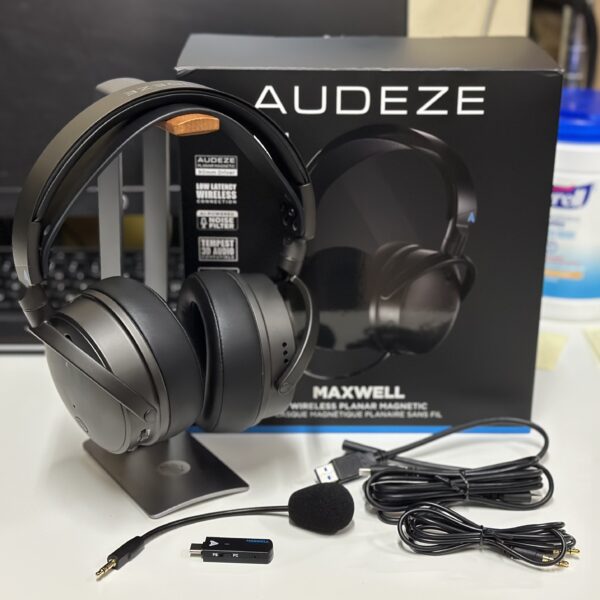
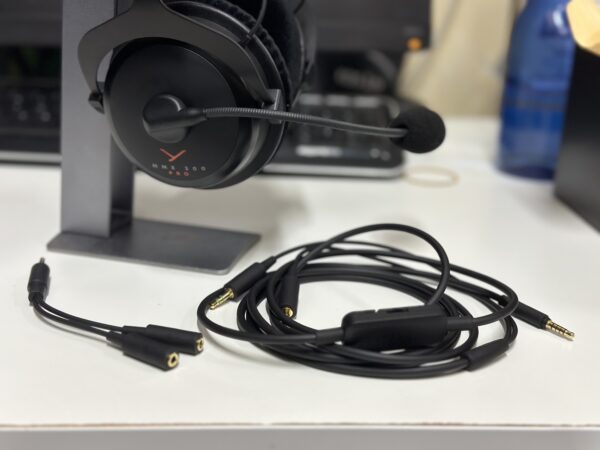
Aesthetics and Functionality
In terms of look and feel, I have to give similar basic feedback. The over-ear fit is comfortable, not too heavy on the head, and the microphone is placed perfectly away from the mouth without being too close (with plenty of room for adjustment as well). With my glasses on, both provide a low-level discomfort with the stems pressing against my head, which can be expected of a lot of over-ear headphones. The Audeze Maxwell headset has a heavy weight to them, though they don’t feel that way during use. The adjustable headband is a bit cumbersome, as it has a unique design that only has three options in terms of height. The MMX 300 Pro, on the other hand, has a sliding headband for easy adjusting and a lightweight feel that is consistent from hand to head. The angle on the head is a bit harsh, and there is a strong clamp force that I would find fatiguing after a while. I would rather wear the Maxwell’s for longer than the MMX 300 Pros, but that’s a matter of personal comfort and head shape.
Functionality wise, beyerdynamic offers simplicity that can’t be beat. It’s a plug-and-chug equation, where you hook up the aux inputs to your device and you can immediately start listening. Granted, this means there will be a wire in the way during use, which some users may find annoying or in the way. Audeze, on the other hand, offers a few different ways to listen. You can connect via Bluetooth or by Wifi, the latter of which needs a USB-C wireless dongle, and start using the headphones wirelessly with ease. If you don’t mind the cable, there is a 3.5mm input and a USB-C input that can be used to start listening via physical connection.
I would have to say that beyerdynamic offers an easier functionality, with no buttons or Bluetooth connection to worry about. Audeze does have an easy function, but with a lot of other features to test out with that connection, it takes more time to figure out the controls and how to properly use the headset unlike its competition.
Tech Specs
| Audeze Maxwell | Beyerdynamic MMX 300 Pro |
| Closed Back, Over Ear Fit
Frequency Response: 10Hz – 50kHz 90mm Planar Magnetic Transducer Driver Max SPL: >120dB THD: <0.1% (@ 1 kHz, 1mW) Bluetooth Version 5.3 Battery Life: 80+ hours Hypercardioid Shure Microphone |
Closed Back, Over Ear Fit
Headphones Freq. Response: 5 – 40kHz Impedance: 48 Ω Microphone Transducer: electret condenser Microphone Polar Pattern: Cardioid Microphone Frequency Response: 20 – 20kHz Transmission Type: Wired |
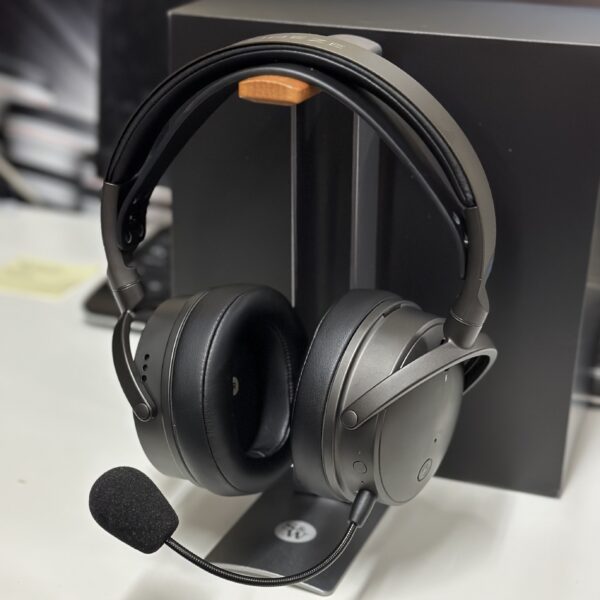
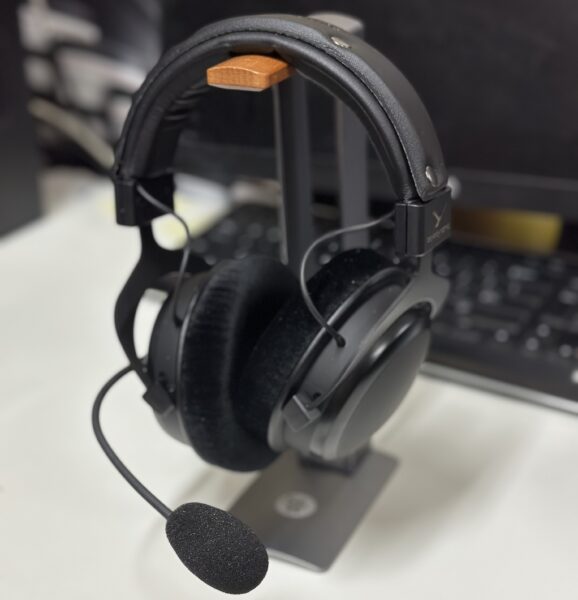
Listening Review
Soundstage
Both of these headphones provide a wide soundstage that is perfect for any gamer to immerse themselves in. I like how the sound wraps around during listening, delivering detail and good height across the ranges. The MMX 300 Pro had a slightly more narrow stage, and it was more detailed in the imaging accuracy. This is not to look down on the Maxwell: these have an excellent, wide stage that comes with highly detailed listening across the frequency ranges. While they may not have active noise-canceling, there is plenty of isolation to be had from the over-ear design itself in both headphones. As I wore both headsets, I was completely immersed in my listening, and I could imagine both of these being an asset to any player. Both the Maxwell and the MMX 300 Pro sit on an even playing field for me, and it comes down to the frequency response for me to judge their sound.
Low Frequencies
The low end in both headphones is incredibly detailed. Beyerdynamic is known for not skimping out on a low end, and this rings true with the MMX 300 Pro. It has a bass that delivers impactful sound and I can feel the subs buzz my whole head. The Maxwell also has an excellent bass response, but it is less aggressive than that in the MMX 300 Pro. This may draw people towards it more, if you are someone who likes the bass to take the backseat in most mixes. It has a little less depth and punch, but it still has incredible detail and earthiness that should be applauded. I listened to a range of low string ensembles on these headphones, and I found myself leaning towards the presence from beyerdynamic rather than the Maxwell.
Mid-Range Frequencies
Huge applause for the midrange! There is a ton of vocal clarity that is essential in gaming headsets, what with the need to listen for dialogue and narration during gameplay. I was listening to “Because” by the Beatles from the Love album, and both headphones gave a stellar performance in highlighting the layers and details to be found in that mix. It seems that the mid-range on the Maxwell was the main focus and what they put the most work into, as there was a definitive volume increase as well as a clarity increase in the next range. The beyerdynamic also gives a lot of clarity, but their presence isn’t accentuated or standing out in any particular way like they are in the Maxwell.
High Frequencies
Like the low end, the high end impresses me on both headsets. Ever consistent, beyerdynamic offers a colorful high end that floats at the very top of the hearing range. Maxwell also has a detailed top range, offering a better balance than that in the MMX 300 Pro. I think the MMX 300 does have a lot of good things to note about the high end, but given the level of force coming from the other two ranges below it, it has to compete and struggles to keep up without sounding fatiguing. The Maxwell provides a better balance overall that lets the user go in for longer listening sessions without becoming tired of a present high end.
Microphone Testing
An important use of the gaming headsets also comes with their microphones. It is a pleasure to say that both of these deliver stunningly clear audio, both of which have a microphone pattern to prove it. The hypercardioid versus the cardioid in the Maxwell and MMX 300 Pro (respectively) allows for more precise pickup in the former. The detachable aspect of the Maxwell microphone allows for more versatility in the headphone usage; it can be used for casual listening or be opted against for solo gameplay. Meanwhile, the MMX 300 Pro has a non-detachable neck for the microphone, though it can swivel from in front of your mouth to above the headband. It is a nice way to get around having a detachable feature that could get lost, but it makes it seem like it has no other option but to be used.
Summary
To conclude, both these headphones have their unique perks that make them great headphones. For people who prefer wireless above all else, Audeze Maxwell is a great find and should definitely be something you consider to add to your gaming equipment. It has a lot of added features of customizability that will enhance any setup you may have, either for gameplay or other listening. On the other hand, if you are looking for a simpler headset that will give you a great sound and then some, beyerdynamic’s MMX 300 Pro is for sure something you will want. It offers comfort and style and doesn’t hold back on its sound profile.
It’s ultimately your choice on which type of headset you want for your next setup, so I highly suggest trying them out before making a final decision. Either way, you will have gained a great asset for your gaming gear.
You can demo and purchase the Maxwell and MMX 300 Pro at Audio 46.

